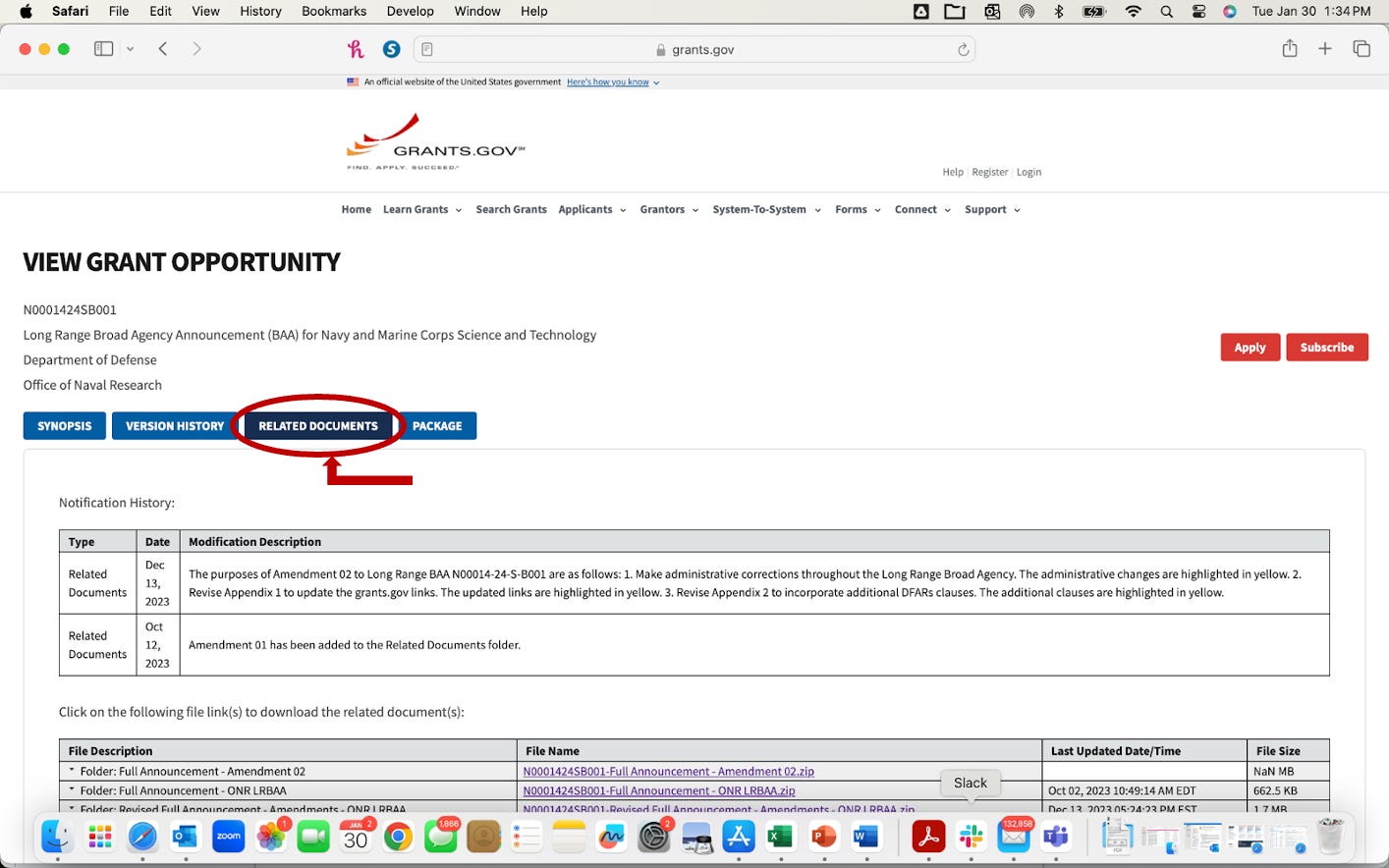Technology Transfer for Defense: Anatomy of a Broad Agency Announcements
by Jeff Decker, PhD and Nilay Papila, PhD
Securing research funding from the Defense Department (DoD) can be tricky because of the number and array of disciplines and topics. Success demands incorporating a systematic approach for identifying opportunities, conducting strategic engagement to determine which grant is a good fit, and meticulously planning. Stanford University’s Technology Transition for Defense has created an approach to successfully secure millions in Defense Department funding.
This blog series provides tips and defines the approach so researchers can use it to move from identifying defense-related opportunities to crafting a compelling application and winning an award. A previous post informed readers on How to Find Existing Research Broad Agency Announcements. This post picks up where the previous left off. After researchers identify the BAA that best matches their research needs, the next crucial step is to comprehensively review the funding guidelines and criteria to assess the eligibility and feasibility of these opportunities for the research project. Five steps below explain the approach to increase the probability of award success.
Step 1. View Grant Opportunity to Determine Eligibility
Ensure that your research project fits within the scope of the funding opportunity and that you meet all the necessary requirements. The "Synopsis" tab typically contains this information. Carefully evaluating the synopsis is essential to avoid wasting time on applications for which you are ineligible or that do not align with your research objectives.
Click on the Synopsis tab. Researchers should pay specific attention to the following headings as they tend to have the biggest deal breakers for eligibility:
Scope and Objectives: Understanding the specific goals and focus areas of the BAA aims to address.
Eligibility Requirements: Answers who can apply, including any restrictions or prerequisites for applicants (e.g., academic qualifications, organizational types, geographic limitations).
Funding Details: Covers the amount of funding available, the expected number of awards, and the duration of funding.
Application Requirements: States which documents and forms need to be submitted, detailed proposal formats, and required supporting materials.
Submission Deadlines: Alerts researchers of all relevant dates, including when applications open and are due, and any other critical timelines associated with the application process.
Contact Information for Support: The BAA provides points of contact, usually a Program Manager, for interested researchers to gain clarification and additional guidance during the application process. We highly recommend reaching out to the Program Manager before beginning the whitepaper. See this post about how to effectively engage them.
Analyzing each of these categories will give you an idea of your eligibility for the BAA. The following steps focus more specifically about understanding the fit between the BAA and your research.
Step 2. View “Related Documents”
The government updates the proposal through documents under the “Related Documents” tab. CIf there is a related documents tab, open it to ensure that you are viewing the latest information, don’t skip this tab.
While the main BAA document contains essential information about the funding opportunity, “related documents” offers additional insights, clarification, or supplementary details that can be valuable to applicants. Examples of related documents may include:
Frequently Asked Questions (FAQs): These documents address common queries from applicants and provide clarifications on various aspects of the BAA, such as eligibility criteria, submission process, and evaluation criteria.
Additional Guidance or Instructions: Sometimes, supplementary documents provide detailed instructions or guidance on specific aspects of the application process, such as budget preparation, technical specifications, or formatting requirements.
Sample Documents or Templates: Some BAAs may include sample documents or templates to assist applicants in preparing their submissions. These samples can serve as references for formatting, content structure, or language usage.
Policy Documents or Regulations: Depending on the nature of the funding opportunity, related documents may include policy documents or regulations relevant to the research area or funding agency's guidelines.
Step 3. Download the latest version of the BAA (PDF format)
This step involves accessing the BAA document in its latest version, which is typically in PDF format. Downloading the BAA ensures that you have the most up-to-date information regarding the funding opportunity, including eligibility criteria, submission requirements, and deadlines. Believe us! We made the mistake of using eligibility criteria posted on the website when beginning a proposal last year. It wasn’t until we downloaded the latest BAA that we realized that we weren’t eligible!
Step 4. Read particular sections in the BAA’s Table of Contents
Many BAAs are framed around specific priority areas or research topics. It is important to identify whether your research aligns with these focus areas. Once you have downloaded the BAA document, review the table of contents to identify the sections relevant to your research project. Pay close attention to the BAA’s mission and the sections marked in the table of contents in the image below. Following the red arrows in the image will help you navigate the document efficiently to locate the information necessary to determine if the BAA’s research priorities and topics align with your research as well as provide valuable information about application instructions, evaluation criteria, technical requirements, and expectations for reporting and evaluation.
Reviewing these documents is a pain. The only thing more painful than reading them is spending time writing a white paper or proposal for which you aren’t aren’t eligible. Do yourself a favor and review the related documents to ensure that you are eligible and understand the BAA requirements.
By following these steps, researchers can effectively navigate the BAA process, gather essential information, and prepare their submissions in alignment with the Department of Defense's requirements and expectations. Once researchers have done the above steps, they should create a one-pager and reach out to the Program Manager responsible for the BAA.







